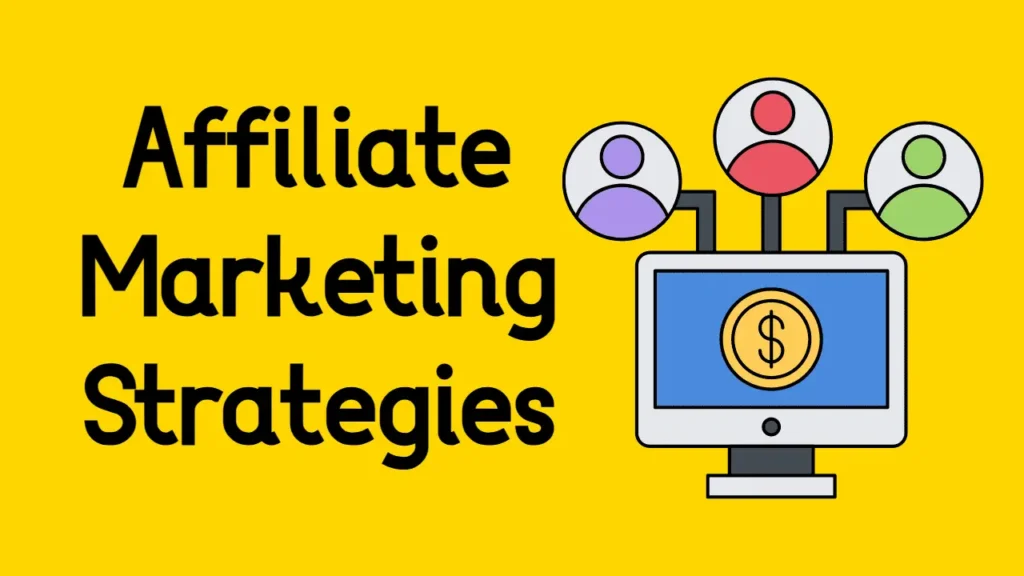
Affiliate marketing is one of the most lucrative online business models, allowing individuals to earn commissions by promoting products or services. However, success in affiliate marketing requires strategic planning and execution. In this article, we will explore the best affiliate marketing strategies to effectively promote products and maximize your earnings.
1. Choose the Right Affiliate Products and Programs
Not all affiliate products are created equal. Selecting the right products and programs is crucial for long-term success.
Criteria for Choosing Products:
- Relevance: The product should align with your niche and audience’s interests.
- High Commission Rates: Look for programs that offer attractive commissions, ideally above 20%.
- Recurring Commissions: Promote products with subscription-based models for passive income.
- Brand Reputation: Partner with trusted and well-reviewed brands.
Recommended Affiliate Networks:
- Amazon Associates (great for physical products)
- ClickBank (digital products with high commissions)
- ShareASale (diverse range of products and services)
- CJ Affiliate (well-established brands)
2. Build a Content-Driven Website or Blog
A high-quality website or blog is a must for sustainable affiliate marketing success.
Essential Elements of a Profitable Blog:
- SEO-Optimized Content: Write blog posts that rank on Google using keywords related to your niche.
- Product Reviews: Create detailed, honest, and engaging reviews of affiliate products.
- Comparison Articles: Write “Product A vs. Product B” posts to help users make purchasing decisions.
- How-To Guides: Provide step-by-step guides showcasing how to use affiliate products.
SEO Tips:
- Use long-tail keywords for better ranking.
- Optimize your content with meta descriptions, headings, and image alt texts.
- Ensure your site loads fast and is mobile-friendly.
3. Leverage Social Media for Promotion
Social media platforms are powerful tools for driving traffic to affiliate offers.
Best Platforms for Affiliate Marketing:
- YouTube: Create product reviews and tutorials with affiliate links in the description.
- Instagram & TikTok: Use short-form video content to showcase products.
- Pinterest: Pin affiliate product images linked to blog posts or landing pages.
- Facebook Groups & Reddit: Engage in niche communities and share valuable content with affiliate links.
Best Practices:
- Avoid spammy promotions.
- Share real user experiences and testimonials.
- Use storytelling to make your content more engaging.
4. Utilize Email Marketing for Long-Term Profits
Email marketing is one of the highest-converting channels in affiliate marketing.
Steps to Build an Effective Email List:
- Offer a Lead Magnet: Provide a freebie (eBook, checklist, webinar) in exchange for an email address.
- Automate Email Sequences: Send follow-up emails introducing products naturally.
- Provide Value First: Avoid hard selling and focus on educating your audience.
- Segment Your List: Personalize recommendations based on subscribers’ interests.
Best Email Marketing Tools:
- ConvertKit (great for bloggers and content creators)
- GetResponse (advanced automation features)
- AWeber (easy-to-use interface for beginners)
5. Use Paid Advertising for Faster Results
While organic methods take time, paid advertising can drive instant traffic.
Best Paid Traffic Sources:
- Google Ads: Target buyers searching for affiliate-related keywords.
- Facebook & Instagram Ads: Use retargeting to show ads to interested users.
- YouTube Ads: Promote affiliate product videos to a warm audience.
- Native Ads: Platforms like Outbrain and Taboola work well for certain niches.
Tips for Running Profitable Ads:
- Start with a small budget and scale up based on results.
- Target the right audience using interest-based and behavioral data.
- Split-test ad creatives to find what converts best.
6. Optimize for Conversions and Maximize Earnings
Driving traffic is only half the battle; conversion optimization ensures you make the most of your traffic.
Conversion Optimization Strategies:
- Use Clear Call-to-Actions (CTAs): Make sure your affiliate links stand out.
- Improve Landing Pages: Use attractive designs and persuasive copywriting.
- A/B Test Content: Experiment with different headlines, images, and CTAs.
- Build Trust with Transparency: Disclose affiliate partnerships to your audience.
7. Analyze Performance and Scale Your Efforts
Tracking your affiliate marketing performance helps you improve and grow your business.
Tools for Tracking Performance:
- Google Analytics: Monitor traffic sources and user behavior.
- Affiliate Network Dashboards: Check commissions and conversion rates.
- Heatmaps & A/B Testing Tools: Identify user interaction patterns (e.g., Hotjar, VWO).
Scaling Your Business:
- Double down on top-performing traffic sources.
- Reinvest earnings into paid ads or content creation.
- Expand into new niches or product categories.
Conclusion
Affiliate marketing is a highly rewarding business model, but it requires a strategic approach. By choosing the right products, building a content-driven website, leveraging social media, utilizing email marketing, running paid ads, and optimizing for conversions, you can maximize your affiliate earnings. Stay consistent, track performance, and keep refining your strategies to achieve long-term success in affiliate marketing.



